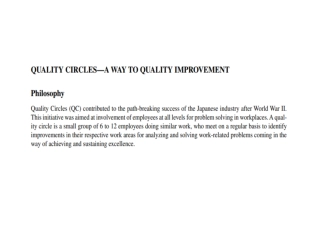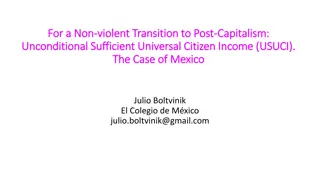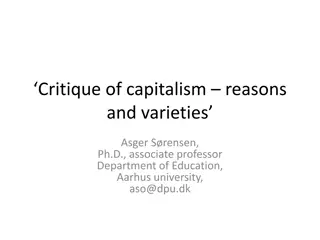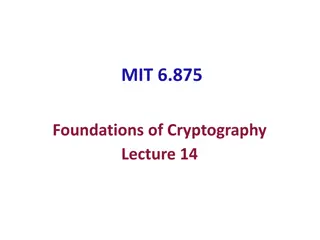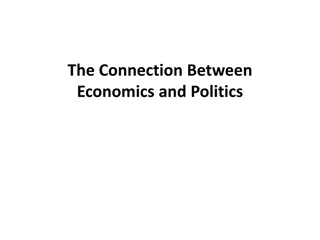Rethinking Capitalism: Achieving Low or Zero Growth
Explore the feasibility of achieving low or zero growth within a capitalist framework in the workshop on De-Growth, Zero Growth, and Green Growth. Dive into the macroeconomic implications of ecological constraints at the Hansjörg Herr Berlin School of Economics and Law on September 23 and 24, 2021.
Download Presentation

Please find below an Image/Link to download the presentation.
The content on the website is provided AS IS for your information and personal use only. It may not be sold, licensed, or shared on other websites without obtaining consent from the author.If you encounter any issues during the download, it is possible that the publisher has removed the file from their server.
You are allowed to download the files provided on this website for personal or commercial use, subject to the condition that they are used lawfully. All files are the property of their respective owners.
The content on the website is provided AS IS for your information and personal use only. It may not be sold, licensed, or shared on other websites without obtaining consent from the author.
E N D
Presentation Transcript
How to Transform Capitalism? Can Low or Zero Growth be Achieved under Capitalism? Workshop: De-Growth, Zero Growth and / or Green Growth? Macroeconomic Implications of Ecological Constraints September 23 and 24, 2021 HANSJ RG HERR BERLIN SCHOOL OF ECONOMICS AND LAW
Structure Small model Socialisation of investment demand Consumption demand Government and external demand Conclusion
A small model (1) GDP = IG+ C + G (2) ??=?? ??? ???= ? ??? (3) ? = Caut + ?(??? ?) (2) and (3) in (1) (4) GDP = ????+ 1 ? ? 1 ? ? Equation (4) shows the relationship between the different variables to realise a stable development of GDP. GDP: gross domestic product, IG: gross investment, C: consumption demand, G: government demand, : capital coefficient, Caut: autonomous demand, c: marginal propensity to consume
- The capitalist accumulation process does not smoothly adjust gross- investment to a certain sustainable growth rate. Investment determines GDP in very unstable way. -Consumption demand does also not endogenously adjust to the value needed for, for example, a zero-growth economy. -In a zero-growth economy or any economy with a politically given growth rate investment demand and consumption demand as well as government demand have to be regulated on a macroeconomic level. - The same is the case for the external sector. Arguments very much follow John Maynard Keynes and Joseph Schumpeter
Socialisation of investment (Keynes 1936: 378) I suggest . that progress lies in the growth and the recognition of semi-autonomous bodies withing the State, bodies which in the ordinary course of affairs are mainly autonomous withing their prescribed limitations, but are subject in the last resort to the sovereignty of democracy expressed through Parliament. (Keynes 1926: 17) Examples mentioned: ports, railway companies, universities, . But more interesting than these is the trend of joint stock institutions. One of the most interesting and unnoticed development of recent decades has been the tendency of enterprises to socialise itself. A point arrives in the growth of a big institution at which the owners of capital, i.e. its shareholders, are almost entirely dissociated from the management. (Keynes (1926: 17) The perfectly bureaucratized giant industrial unit not only ousts the small and medium-sized firm and expropriates its owners, but in the end it also ousts the entrepreneur and expropriates the bourgeoisie as a class which in the process stands to lose not only its income but also what is infinitely more important, its function. (Schumpeter 1942: 134) Entrepreneurship is taken over by management and special professional departments.
National Development Commission Credit plan National level quantitative credit controls for investment Banks Public investment and Public enterprises Ownership: Different levels of government Stakeholder Stock Companies Ownership: Government Holdings Development Banks Employees Local Community Private enterprises Ownership: Private Small- and Medium- Sized private companies National investment plan, allocation of investment to different goverment levels Allocation decided by banks Allocation to different sectors according to an Industrial Development Commission Credit plans worked successfully in South-East Asian countries including China
Control consumption demand in a zero-growth economy The challenge is that in a zero-growth economy net-saving must be zero and in case of productivity developments even negative. Households with very high income and wealth will save. Even if the group of rich give permanent credit to group of poor the poor this is not sustainable. This would permanently increase debt quotas of the poor. The conclusion is that only a radical change in income and wealth distribution can lead to a sustainable zero-growth economy. Radical redistribution policy is needed.
Elements of redistribution policy - Real interest rates should and can become zero. Real interest rates of zero are justified as interest to-day rewards no genuine sacrifice, any more than does the rent of land (Keynes 1936: 376). Credit plan fix a very low refinancing rate or even lending rate of banks and the desired credit volume -Low interest rates will bring down the minimum profit rate -Profits of big companies (stakeholder stock companies) do not flow to the private sector - Private small- and medium sized companies act in a competitive environment and profits will be too high
Tax policy High inheritance taxes and high marginal income tax rate For there are certain justifications for inequality of incomes which do not apply equally to inheritances. (1936: 173f.) High inheritances violate the merit principle Anthony Atkinson (2015), for example, recommended that a person can get during his life a gift plus inheritance of not more than 100 000 euro form another person or institution without tax; then a progressive inheritance tax has to be paid. For private firms tax allowances in case the inheritor continuous the business should be introduced. For income tax he recommends a marginal tax rate for households of 65%.
Government sector - The public sector would be relatively big, providing all kind of public goods and a stable public gross-investment. - In a zero-growth economy the government sector in the medium-term should have a balanced budget otherwise in case of a budget deficit the debt quota would permanently increase. - Anticyclical fiscal policy still might be needed.
External sector Keynes proposal for the Bretton Woods System and a Clearing Union can be used as a vision. - more or less balanced current accounts - symmetric adjustment process in case of current account imbalances - capital controls otherwise for example the credit plan cannot work There is no country which can, in future, safely allow the flight of funds for political reasons or to evade domestic taxation or in anticipation of the owner turning refugee. Equally, there is no country that can safely receive fugitive funds, which constitute an unwanted import of capital, yet cannot safely be used for fixed investment. For these reasons it is widely held that control of capital movements, both inward and outward, should be a permanent feature of the post-war system. (Keynes 1943: 31)
Labour market - Also, in a zero-growth economy productivity increases are likely. - If population is not shrinking a cut of working time in all forms is needed to avoid unemployment.
Conclusion - A zero-growth economy or a politically determined GDP growth rate is possible and sustainable - Under present capitalism a stable zero growth economy is not possible - A zero growth economy needs among other things Control of investment socialisation of investment, credit plan Changing income distribution to avoid saving Control of the external sector especially capital controls The vision of a zero-growth economy presented is not a planned economy Big private sector Competition between socialised stock companies Price mechanism still in place - Conditions for a highly regulated capitalism have been developing High inheritances violate the merit principle Shareholders became a parasitic class without substantial function / other mechanism can control management better - The vision presented here is an utopia but under certain political conditions can become reality
Literature Atkinson, A.B. (2015): Inequality What Can Be Done? Cambridge, Published by Harvard University Press. Dullien, S., Herr, H., Kellerman, C. (2011): Decent Capitalism. A Blueprint for Reforming our Economies, London, Pluto Press. Keynes, J.M. (1926): The End of laissez-faire, Hogarth Press, London. Keynes, J.M. (1936): The General Theory of Employment, Interest and Money, Collected Writings of John Maynard Keynes, Vol. II, Cambridge, UK, Cambridge University Press. Keynes, J.M. (1943): Proposals for an International Currency (or Clearing) Union, in The International Monetary Fund 1945-1965, Volume III, Documents, edited by J. K. Horsefield, Washington, DC, IMF, 1969, 19 - 36. Schumpeter, J.A. (1942 first publication) [2011]: Capitalism, Socialism and Democracy, New York and London, Martino Publishing.


